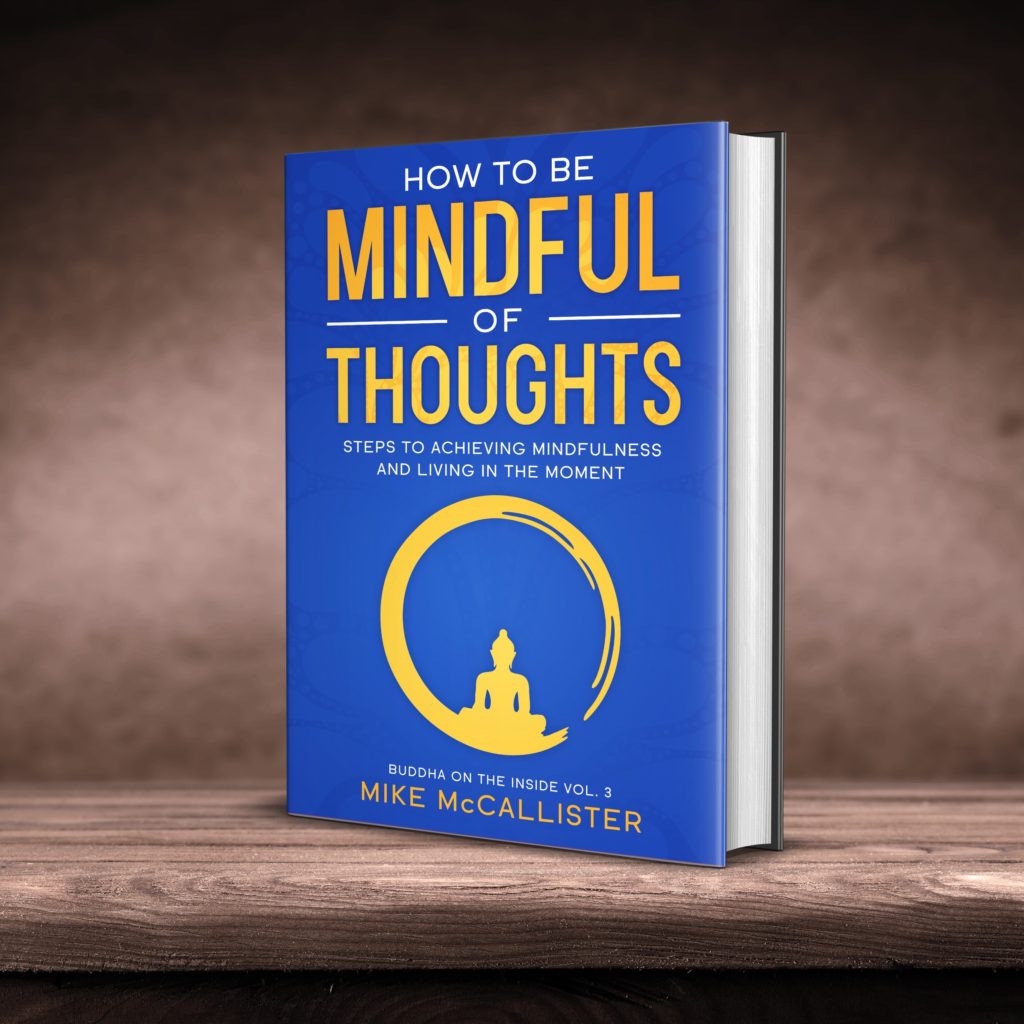
Mindfulness is a life-changing state of being whose real benefits manifest best when you habituate its practice in your daily life.
For mindfulness to become a lifestyle, you need to do is meditate habitually and practice mindfulness on everything you do.
In a previous post, we discussed how to integrate mindfulness into a busy, hectic routine.
In this post, I’d like to build on that. I will share practical tips that will help you nurture the habit of mindfulness and meditation without overwhelming yourself.
#: Know your WHYs
As I mentioned in a previous blog post, always be aware of your WHYs of meditating and practicing mindfulness.
These WHYs are the compelling reasons that fuel your motivation to practice meditation and mindfulness. They (WHYs) drive you to practice mindfulness and meditation until these states become part of the person you are.
Spend some time reflecting on the reasons why you want to habituate meditation and mindfulness. Make sure to dig deep and come up with compelling WHYs. The more potent the reasons, the more motivated you shall be.
When identifying your WHYs, come up with actual, compelling reasons. These reasons should show you how meditation and mindfulness add value, convenience, and comfort to your life.
For instance:
“I want to meditate because my friend does it” may not be compelling enough.
This reason may be compelling enough:
“I want to meditate to become more focused and peaceful so that I can feel relaxed and work better.”
Get clarity on why you need to meditate and become mindful, then come up with many persuasive WHYs. As many as possible! Write them down in your journal and go through them daily. You want to remind yourself of why you need to recommit yourself to cultivating these states of being.
#: Pin-up your WHYs in several places in your house
You need to give yourself daily meditation and mindfulness reminders. You may not be able to go through the WHYs you’ve written on your journal every single day.
Here is a good fix for that:
Make several copies of your WHYs and put them up at different strategic places of your home and work office/cubicle.
For instance, you can:
- Pin your WHYs to your work desk
- Put them up as post-its on your laptop
- Stick it on the fridge, bathroom mirror, wardrobe door, etc.
By doing this, every time you walk past those points, you will glance at your WHYs. This will give you gentle reminders to meditate and be mindful throughout the day.
#: Take baby steps
The advice, “take the plunge” is part of the reason why many of us tend to dive right in with high hopes. We hope to begin an activity and endeavor to engage it for a long duration.
You may have taken the same approach with meditation and mindfulness by trying to engage in 20-30-minute sessions. If you did, every likelihood is that you struggled to stay mindful during the practice. And after feeling frustrated and disappointed by the process, this may explain why you decided to quit it for good.
A more intuitive way to turn meditation and mindfulness into lifelong habits and states of being is to ease yourself into the practice. You can do this by taking baby steps.
Instead of beginning with a 20-minute mindfulness meditation session, start with 30-60 second long meditative practices. Perform this 2 to 3 times a day. Once you get the hang of things, you can slowly increase the duration by 30 seconds every other day. Do that as you gradually build to 10-minute long sessions.
Taking a gradual approach is one of the secrets to habituating the states of meditation and mindfulness.
#: Create a schedule
Saying, “I will meditate or be mindful” and leave it at that is not good enough. At least it won’t help you engage in the practice consistently enough for it to turn into a habit.
You need to plan and schedule the activity and do it at the same time daily. You should also ensure you do it in exactly the same way if you want to make it to stick. By doing this, you build regularity, punctuality, and consistency.
Find a time of day when you can spare a few minutes to meditate. Be sure to practice your mindfulness and meditative exercises at that specific time every day. Set alarms or reminders for your mindfulness sessions and practice consistently.
#: Tie the practice to a trigger
Besides scheduling your mindfulness and meditative practices into your daily routine, tie them to a particular trigger. For utmost effectiveness, attach your practice to already-built habits. This way, those practices will serve as reminders and triggers for your mindfulness meditation practice. As a result, you will find it easier to practice mindfulness consistently.
Let’s say you shower at 7 AM daily and would like to meditate before or after your shower. You could say, “I will meditate for X minutes before/after my shower.” After showering, consciously engage in the practice.
After a few times, you will connect the two activities. Every time you think of showering at 7 AM, you will naturally want to meditate after the shower.
#: Create a supportive environment
Your environment significantly influences the behaviors you adopt and habituate. You need to create an environment conducive to being aware and practicing meditation. This will help you to be mindful most of the time and meditate according to your schedule.
For instance, you could use a small corner of your home as a meditation or mindfulness shrine. Go to this place whenever you need to practice formal mindfulness meditation.
Here are some other ideas to prepare your ‘shrine’:
- Place your yoga mat there, along with a few objects that calm you
- Pin-up mindfulness-based quotes
- Light incense
- Or diffuse essential oils using an essential oil diffuser
In so doing, every time you walk past the corner, you will feel an urge to meditate.
Moreover, eliminate clutter from your abode. Get rid of any extra, broken, and used furniture pieces, utensils, clothes, accessories, books, etc.
A decluttered, neat, and organized space relaxes the mind. This, in turn, makes it easier to relax and stay connected to the present moment, especially during formal mindfulness sessions.
#: Make it enjoyable
Meditation and mindfulness don’t need to be boring and conventional. We tend to stick to practices that we find enjoyable. To turn meditation and mindfulness into lifelong habits, make them fun and exciting by applying some of these ideas:
- Ask a friend to join you on the journey to being more meditative
- Practice mindfulness with raisins or almonds by focusing on their shape, tasting them, eating them mindfully, and smelling them.
- Mindfully watch short, funny video clips on YouTube. Train yourself to watch them without using your preconceived notions to analyze them.
These hacks are interesting, practical, and easy to follow. However, to materialize your goal of becoming mindful at all times, you must practice them consistently.
As you do this, you will encounter many problems. In the next blog post, I’ll share with you the common mistakes I made. I have seen many people make these mistakes when working towards a more mindful life. I’ll also share actionable strategies you can use to resolve these mistakes:

In my book – How To Be Mindful Of Thoughts: Steps To Achieving Mindfulness And Living In The Moment (Buddha on the Inside Book 3), I discuss various other approaches you can use to increase mindfulness. Get your copy and see your productivity at work increase rapidly.
Written with beginners in mind, It will teach you:
- The basics of mindfulness, including what it really is, what it entails, how it works and more
- Why you need to nurture mindfulness
- How mindfulness and leadership coexist
- How to transform your life with different mindfulness techniques
- How to observe your thoughts, manage your emotions and feel good with mindfulness-based meditative techniques
- How to make mindfulness part of your everyday life to derive all its benefits
…And so much more!

Get your friends and family to practice mindfulness too with the widely acclaimed The Ultimate Inner Peace Affirmation Audio Series To Attain Nirvana!




TEST